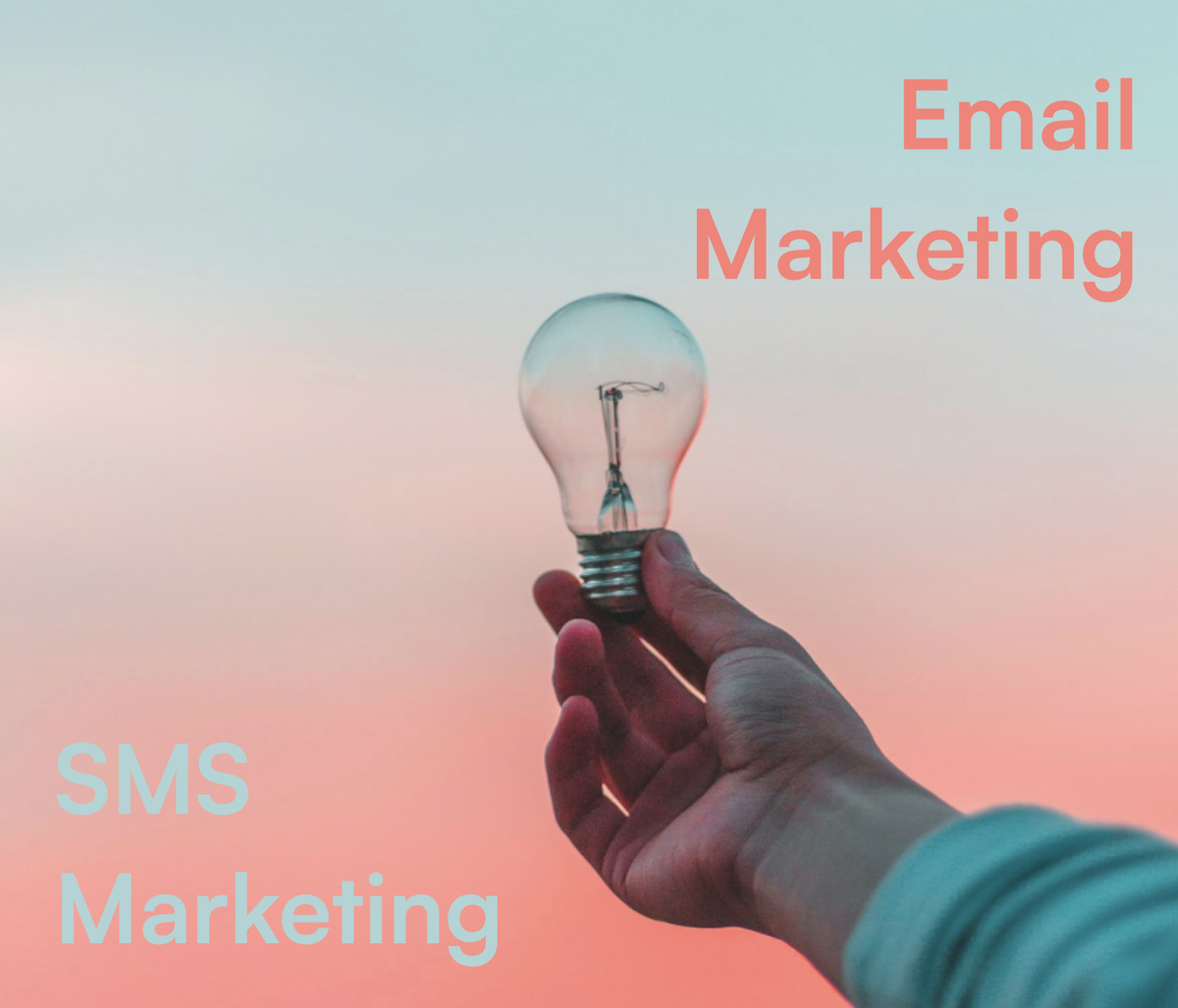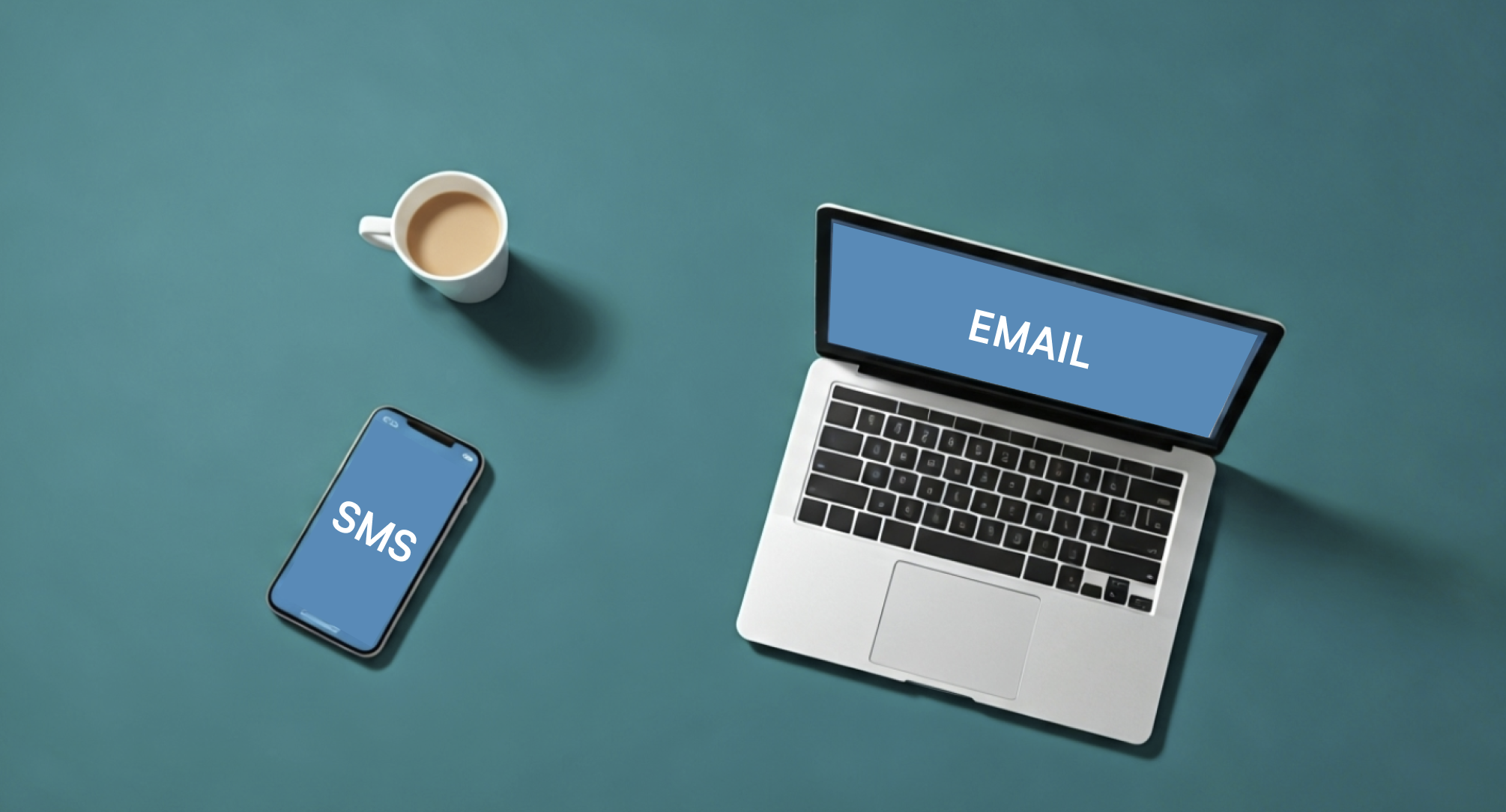SMS Marketing vs Email Marketing: Which Is Better for SMBs?

Introduction
If you're a small business owner, you've probably wondered whether texting your customers is better than emailing them. You might hear experts say you should be doing both, using automation, tracking clicks, or creating campaigns.
But here’s the truth: most small businesses don’t need complicated tools. You just need a simple way to stay connected with your customers and remind them you’re here.
So let’s break it down clearly. What is SMS marketing? How is it different from email? And how can you use each in a way that works for your business?
Understanding SMS Marketing for Small Businesses

What Is SMS Marketing?
SMS marketing is the practice of using text messaging to communicate directly with customers for business purposes. These messages are typically short and time-sensitive, and may include updates, promotional offers, appointment reminders, or service alerts.
If you've ever received a message like:
- “Big sale this weekend. Come by and save 20%.”
- “Thank you for visiting us! Show this message next time for $10 off.”
That's SMS marketing in action. It's simple, direct, and most people read texts within minutes.
The main idea is to keep things short. This helps businesses talk to people fast, so their customers do not feel overwhelmed.
SMS marketing stands out because the average open rate is 98%. That is much higher than the 20% average open rate for emails. This helps small businesses get their messages seen. People can see these messages right away and are more likely to take action.
Real-World Examples of SMS in Action for SMBs
You don’t need fancy tools to make an impact. For small businesses, a well-timed text can drive sales, boost visits, and keep your brand top of mind. Here are real examples of SMS campaigns that do exactly that.
- A retail shop announces a weekend flash sale to their customer list:
“This weekend only: 25% off all denim. Stop in Friday–Sunday and show this text to save.” - A pilates studio fills slow class times with a time-sensitive offer:
“Need a midweek reset? Join our 2pm Wednesday class for just $10 - limited spots.” - A real estate agency promotes its open house lineup to potential buyers:
“Open House Weekend! Tour 4 homes in Northwood this Sat/Sun. Details: [link]” - A coffee shop promotes a loyalty perk to its regulars:
“Thanks for being a regular! Show this text this week and get a free pastry with any drink.” - A seasonal service business re-engages past customers:
“Time to book your fall HVAC tune-up. Schedule before Sept 10 and save 15%. Call or reply now.”
Each of these messages is short, clear, and useful to a broader audience. That’s the heart of good SMS marketing, it helps you stay top-of-mind without overwhelming your customers or needing fancy tools to get started.
For other SMS template ideas, check our other guide here.
We’ve also built a custom GPT to help you create your own SMS message templates. Just click below, open the tool, and ask it to help you write the perfect text for your customers.
What is Email Marketing?
Email marketing is a way to communicate with your customers by sending messages directly to their inbox. It’s especially useful for building long-term relationships and sharing more detailed content, like news, promotions, product updates, or visual content such as images and videos.
It also gives you the ability to organize your contact list into segments, so you can send more targeted messages based on customer interests or behavior. You can even automate certain emails, like welcome messages or reminders. For many small businesses, email remains a valuable and flexible tool to keep customers informed and engaged.
Real-World Examples of Email Marketing in Action for SMBs
Email marketing gives small businesses a simple, cost-effective way to stay connected with customers over time. Whether you're trying to bring people back in the door, promote something new, or build loyalty, a well-crafted email can go a long way.
Here are a few common ways small businesses use email campaigns in the real world:
1. Newsletters
Newsletters are regular emails that keep your audience informed and engaged.
Example: A local fitness studio sends a monthly email with class schedules, healthy living tips, and updates about new trainers or workshops. It helps customers feel involved and reminds them to book classes.
2. Product or Service Highlights
These emails showcase products or services based on customer interest or past purchases.
Example: A boutique clothing store emails customers personalized picks for the season, using past purchases or style preferences. This keeps shoppers engaged and more likely to come back.
3. Loyalty Offers and VIP Perks
Loyalty emails reward your best customers and make them feel appreciated.
Example: A neighborhood café sends exclusive early access to seasonal drinks or invites to small events just for their email list. These little touches build deeper relationships.
4. Seasonal or Event Promotions
Emails are great for promoting timely sales, events, or holiday specials.
Example: A landscaping company sends a “Spring Clean-Up Special” email to past clients with a discount offer. It’s a simple way to spark bookings right when customers are thinking about their yards.
When done right, email campaigns are more than just promotions. They provide value, build trust, and keep your business front and center in your customer’s inbox.
Key Differences Between SMS and Email Marketing

SMS marketing and email marketing are both key parts of any marketing strategy. Each has its own strengths. SMS marketing helps you get quick messages out fast, making it great for urgent news or quick replies. It is hard to beat when it comes to speed and getting people to read your messages right away.
Email marketing is good for longer and more detailed messages. You can use it to tell stories, build loyalty, and make people more aware of your brand. By knowing the key differences between email marketing and sms marketing, small business owners can use both to boost customer engagement. This way, they can have a strong, all-around marketing strategy. Now, we will look more at things like how fast messages go out and the style of each one.
Delivery Speed, Open Rates, and Engagement
SMS and email marketing work in different ways and reach people in their own unique styles. Here’s a quick look at how they stack up:
What You Want to Know | Text (SMS) | |
|---|---|---|
How it's delivered | As a text message | In the email inbox |
How soon it’s seen | Usually within minutes | Could take hours or days |
How it looks | Short, plain text | Can include images and design |
Best for | Quick updates, reminders, short promos | Newsletters, detailed updates |
How people respond | Fast, especially if the message is short and useful | Slower, often ignored unless it’s well-designed |
With SMS marketing, the delivery is almost instant. People usually see the messages right away. This is very good for important or fast updates. On the other hand, email marketing is better for sending more detailed information. It lets you talk to the customer over time and keep them interested. If you use both sms marketing and email marketing, your business can be better at reaching people in different situations and at different times, so your marketing fits what your customers need.
Message Style and Content Limitations
When you look at both SMS and email, you can see some clear differences in the way messages are written. SMS messages must be short because there is usually a 160-character limit. This means you need to be simple and clear to write good texts. People like this style for reminders, deals, and quick updates.
Email, on the other hand, lets you write much longer messages. It also lets you add videos, pictures, and more. With email, you can tell a story or explain your products in detail with color and images.
SMS is fast and works well for simple notes, but email gives you many choices. With email, you can try out different types of communication. So, when you pick between both options, think about what you want to say and how complex your message needs to be. The choice may depend on having to follow character limits for some content.
Choosing Between SMS and Email: What to Keep in Mind
Both SMS and email have their place in a small business marketing toolkit, but they require different levels of time, effort, and skill.
Email marketing can be powerful, but it usually takes more planning. You’ll need to write thoughtful content, design a layout that looks good on all devices, and often do some research - especially if you’re sending newsletters or educational emails. It’s a great tool, but it can be time-consuming.
SMS marketing, on the other hand, is much faster to set up and send. You don’t need a graphic designer or a detailed content plan. A short, timely message is often all it takes to drive action - whether you’re filling an open slot, promoting a weekend offer, or reminding customers about a seasonal service.
For many small business owners with limited time and resources, SMS can be a more practical and immediate way to engage with customers. That’s why in the next section, we’ll take a closer look at how SMS marketing really works for small businesses, and how to get the most out of it.

Essentials for SMS Marketing for a Small Business
There are plenty of platforms out there that offer SMS marketing features. But many of them are built for large teams with a dedicated marketing person, graphic design resources, and time to build out complex, automated campaigns.
Most small business owners don’t have that kind of setup, and they don’t need it, either.
If you're looking to get started with SMS marketing in a way that’s simple, effective, and manageable, here’s what really matters:
A Trusted, Compliant Platform
You need a tool that’s built to follow SMS marketing rules (like opt-in and opt-out requirements) and keeps your customer data safe. Compliance is key, especially when you’re texting a large list.
Easy Contact Filtering and Organization
You should be able to organize your customer list into groups, like regulars, recent visitors, or seasonal clients, so your messages feel more relevant and not one-size-fits-all.
Quick Selection and Sending
The platform should let you easily choose multiple contacts and send one message to all of them at once. No need for complex automations, just a few clicks and your message is on its way.
That’s it. You don’t need complicated workflows or fancy templates. You just need a reliable tool that helps you reach your customers quickly and keeps things simple behind the scenes.
Conclusion
Both SMS and email marketing can play an important role in helping small businesses stay connected with their customers. Email is great for in-depth updates, promotions, and newsletters, but it often takes more time, planning, and design work to do well.
SMS marketing, on the other hand, is faster, more direct, and easier to manage, especially if you're a small team without a full-time marketer. With the right platform and a clear message, you can reach customers quickly, stay top of mind, and drive real results without overcomplicating your process.
If you're looking for a simple, effective way to connect with your audience and keep your business visible, SMS might be the easiest place to start.
Now that you know what it takes, how it works, and when to use it, you're ready to make SMS marketing or Email Marketing work for you.
Frequently Asked Questions
Is SMS marketing better than email marketing for small businesses?
SMS marketing can work well for small businesses when you need fast answers. It gives higher open rates and people reply quicker. On the other hand, email marketing is better if you want to share lots of information. It also helps build long-term relationships with your customers. The right choice will depend on what the business needs and what the customers like.
How often should I send SMS or email campaigns?
Finding the best time to send sms messages or emails depends on what your audience likes and how much they interact with you. Most people do well getting 2 to 4 sms messages each month. Sending emails once a week is also a good idea. Be sure to check how people respond often. This way, you can change how often you contact them to get the best results.
What are the legal requirements for SMS marketing in the US?
In the U.S., sms marketing has to follow the rules from the Telephone Consumer Protection Act. Marketers need to get clear permission from people before sending messages. They should also make it easy for people to stop getting texts with a simple way to opt out. There are rules about how often messages go out, and what is in the texts. Doing this not only keeps you safe under the law, but it also helps you keep the trust of your customers.
Can I use both SMS and email together?
Yes, when you use both SMS and email together, you can make your marketing strategy stronger. SMS lets you get in touch with people right away. Email gives you a way to share more details. If you connect both of these channels, your small business can reach all kinds of people. This will help you get better results at every step of the customer journey.





